During an 1870 Siege, Trapped Parisians Dined on Rat, Cat, and Elephant
In a desperate time, the zoo became a source of food.
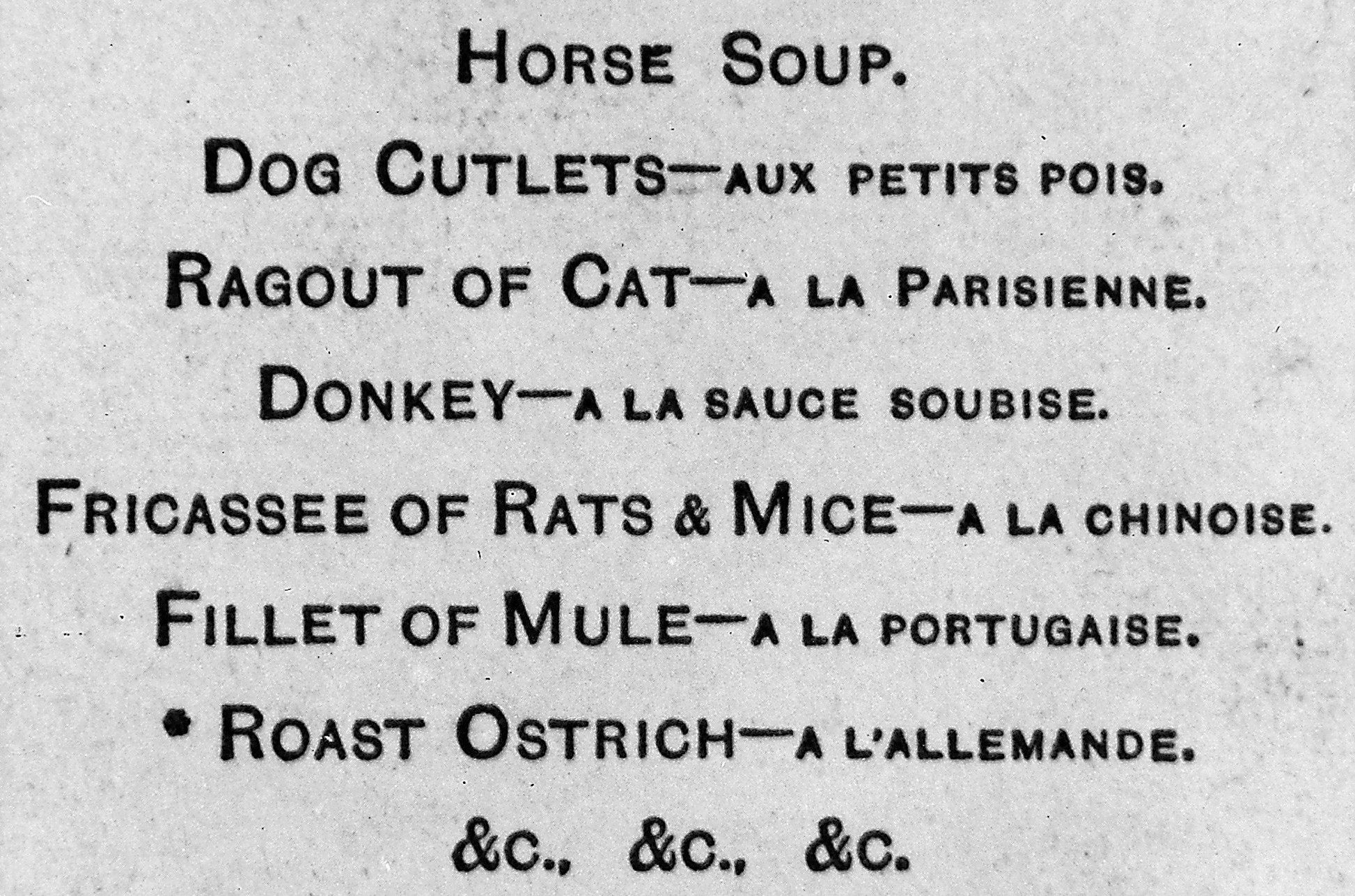
Parisians have long been famous for their gastronomy. They invented the concept of the restaurant as we know it, and many of the dishes invented in the city’s temples of fine dining are emulated worldwide.
But for four-and-a-half months from September 1870, Parisians engaged in a kind of gastronomy few would want to copy. In the middle of the Franco-Prussian War, the allied German forces surrounded France’s capital and proceeded to lay siege, cutting off a majority of food shipments to Paris. The result was the consumption of nearly every animal in Paris—horse to rat, dog to zoo elephant.
An American doctor sojourning in Europe had the bad luck of being trapped in Paris during the whole siege. Robert Lowry Sibbet hailed from Pennsylvania, and collected his recollections of the siege in a 580-page volume, The Siege of Paris by an American Eye-Witness, published in 1892.
Sibbet’s first weeks in Paris were absorbed in describing the beauty of the museums and public buildings of Paris and the orderliness of the Parisians. But even before the German army finally cut Paris off from its supply lines, Paris was seething.
Emperor Napoleon III had gone to the front lines, and was captured in Sedan, France on September 2. By September 4, under pressure from the populace, France was declared a republic. Meanwhile, Paris prepared for siege.
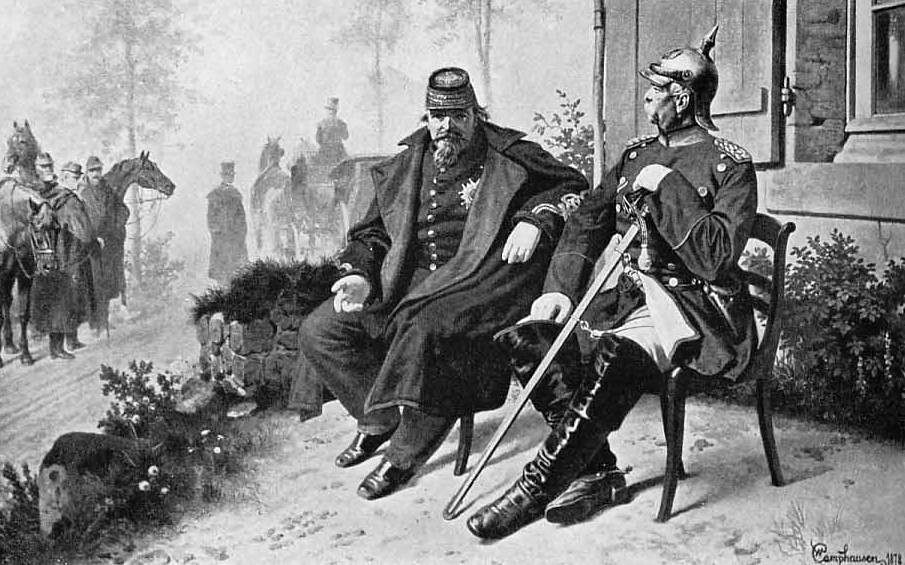
Sibbet noted how the Ministry of Agriculture, in anticipation of siege, was “very active in gathering in from the adjoining departments all the produce and fuel that can be found, as well as fat cattle, cows, calves, sheep and hogs,” with livestock blanketing the Bois de Boulogne park on the edge of Paris.
The siege descended completely on September 18—“the last railroad was taken, the last telegraph line was cut, and now the postroads all around the cities are occupied by the Germans,” Sibbet recorded, leaving himself as “a prisoner in a great city.”
The first sign that all was not well with supplies was on October 10, when, in order to stem the number of sheep and cattle killed each day, the city opened its markets to horse meat.
Nothing was wasted. The horse in the abattoir was “blindfolded, struck with a sledgehammer on the forehead and bled with a large knife. The blood is caught in basins and used for the purposes of making puddings.”
While French consumption of horse meat has seesawed in the last few centuries, Parisians were skeptical enough at the time to require encouragement.

Sibbet described how the Central Sanitary Commission of the city hosted a dinner themed around horse: horse-broth soup with toast, boiled horse with cabbage, horse haunch à la mode, braised horse flank, roast fillet of horse, finished off with beef and horse cold cuts. But horse would be a high gastronomic point of the siege.
By mid-November, rationing was in full effect. Parisians were allowed 100 grams of fresh meat per day. By meat, the authorities meant beef, horse and salt fish. But already Parisians were turning to alternative sources for calories.
On November 12, 1870, a stall was erected on the Rue Rochechouart. “On the right side of the stall was several large dogs, neatly dressed … next to these are several large cats, also very neatly dressed … On the left of the stall there is a dozen or more of rats stretched upon a tray, and a young woman, half veiled, is timidly approaching them with a little girl at her side. She wishes to inquire the price of the rats, and, if she has money enough, to purchase one,” Sibbet recounted.
Henry Markheim, another chronicler of the siege, summed up these new flavors as: “dog is not a bad substitute for mutton,” and that “cat, as all the world knows, is often eaten for rabbit.” The rich, on the other hand, “made merry over their pâtés de rat.” Rat turned out to be pricy. Sibbet recorded that cat and dog meat was anywhere between 20 to 40 cents per pound, but that a “plump rat” cost 50.
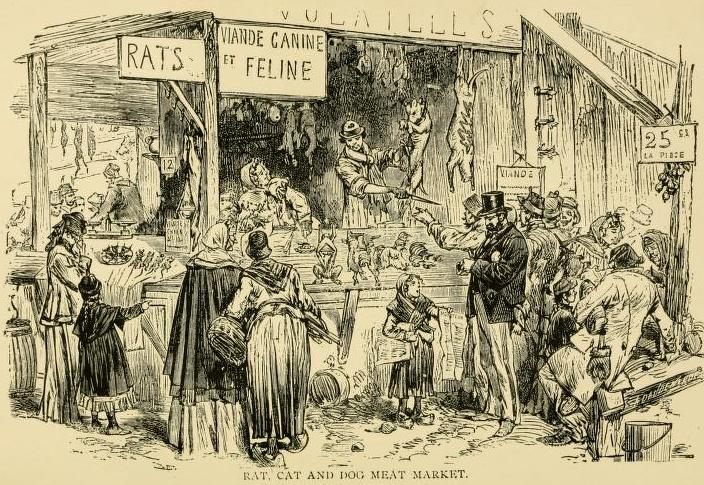
November heralded the closing of most of Paris’ famous cafes and restaurants, many being replaced with government canteens where poorer Parisians could get something to eat. The siege, however, was only half over.
Sibbet’s habit was eating rolls and hot chocolate for breakfast, but as December came he began to suspect that the milk was being adulterated. For Christmas dinner, he had “roasted horse meat, a small dish of potatoes, excellent wheat-bread and plenty of wine,” while spending a guilty thought for the working-class Parisians standing in line for thin horse-bone soup.
But on the same night in one of the still-open restaurants, a very different kind of feast was happening.
The Christmas Day 1870 menu at Paris’s long-gone Voisin restaurant is famous. Emblazoned with the words “99TH DAY OF THE SIEGE,” it is quintessentially French—many-coursed and accompanied with some of the finest wines available. But a second look reveals some discrepancies.
The starter was stuffed donkey’s head, probably served cold, with radishes, butter, and sardines. Intriguing, but not totally exotic. The soup course, however, is startling—a choice between red bean soup with croutons, and broth of elephant.
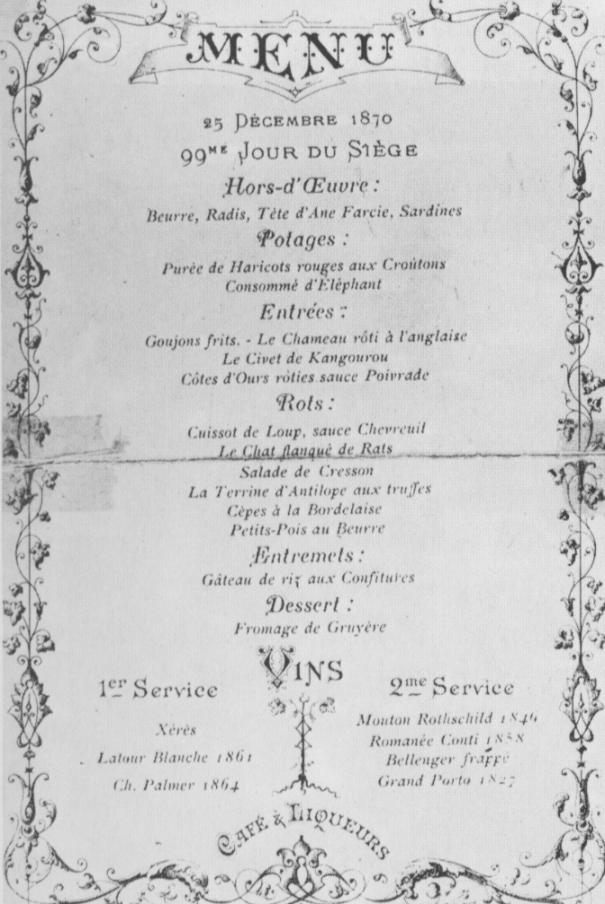
The zoos and garden parks of Paris had despaired of feeding their charges, and no one could think of a reason not to eat the animals destined for slaughter anyway. The unlucky elephant served at Voisin was likely not one of the famous siblings Castor and Pollux, displayed at Ménagerie du Jardin des Plantes, but a lesser-known zoo elephant exhibited at the Zoological Garden (Castor and Pollux were said to be killed post-Christmas). In any case, elephant meat was on stock at a city market on the 18th of December.
There were still rodents on the menu at Voisin, in the form of roasted cat flanked with rats. Kangaroo stew and terrine of antelope and truffles also feature, as well as a poetic dish of wolf dressed with deer sauce.
The blunt labeling of exotic meats was by government decree, with the government arresting anyone trying to pass their wares of dog off as beef or venison. The result is disconcerting to see—the names of zoo animals, bracketed by the cooking techniques of fine French cuisine.
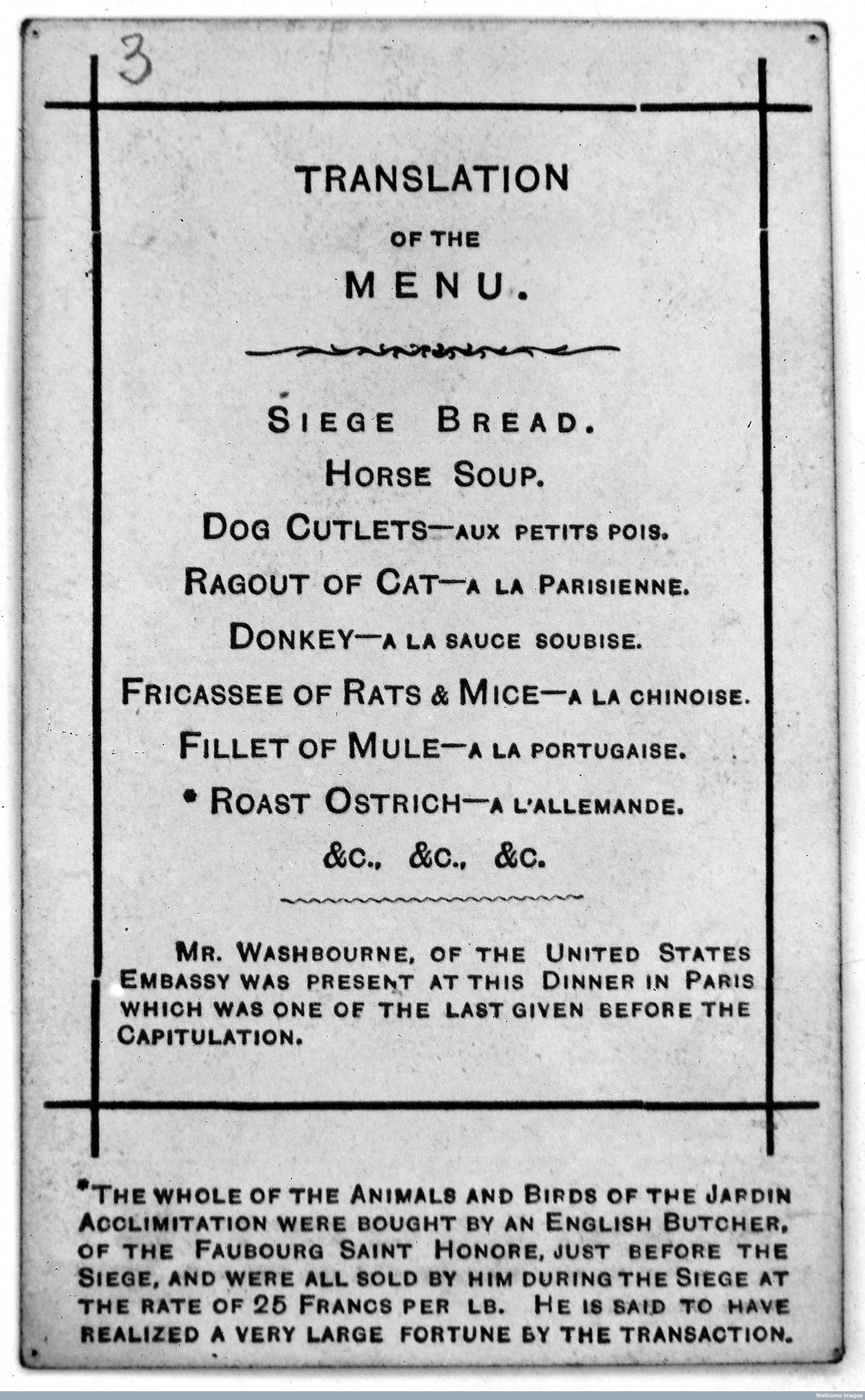
The siege of Paris ended on January 28, leaving a demoralized city damaged from shelling and a starving populace. In mid-February Sibbet noted solemnly that the domestic animals of the city were gone—even of that symbol of Paris, the poodle, there was no sign.
When summing up the end of the food troubles of Paris, Sibbet quoted a darkly satirical poem he had read, detailing the extent to which the Parisians went to survive:
Kind patrons and friends you smile at this food,
But never ‘til hungry can you tell what is good,
Remember, I pray you, of these kinds of meat,
We were eating to live not living to eat.
Gastro Obscura covers the world’s most wondrous food and drink.
Sign up for our regular newsletter.





























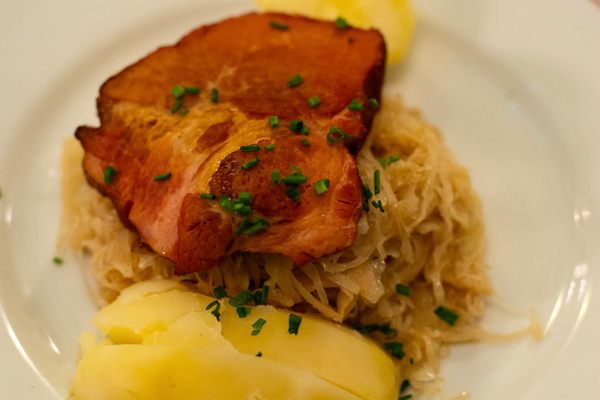
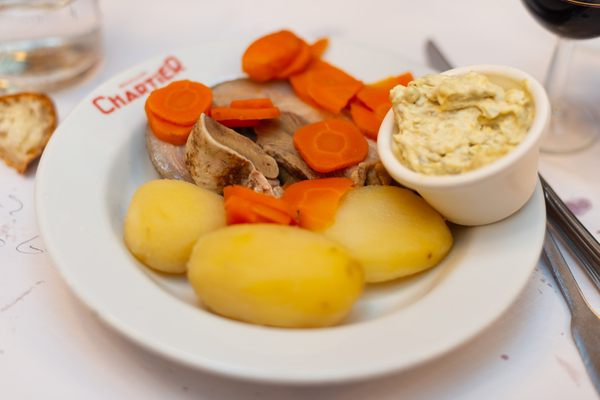
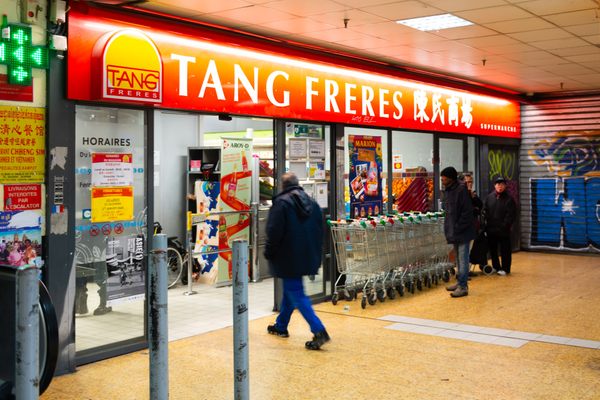


Follow us on Twitter to get the latest on the world's hidden wonders.
Like us on Facebook to get the latest on the world's hidden wonders.
Follow us on Twitter Like us on Facebook